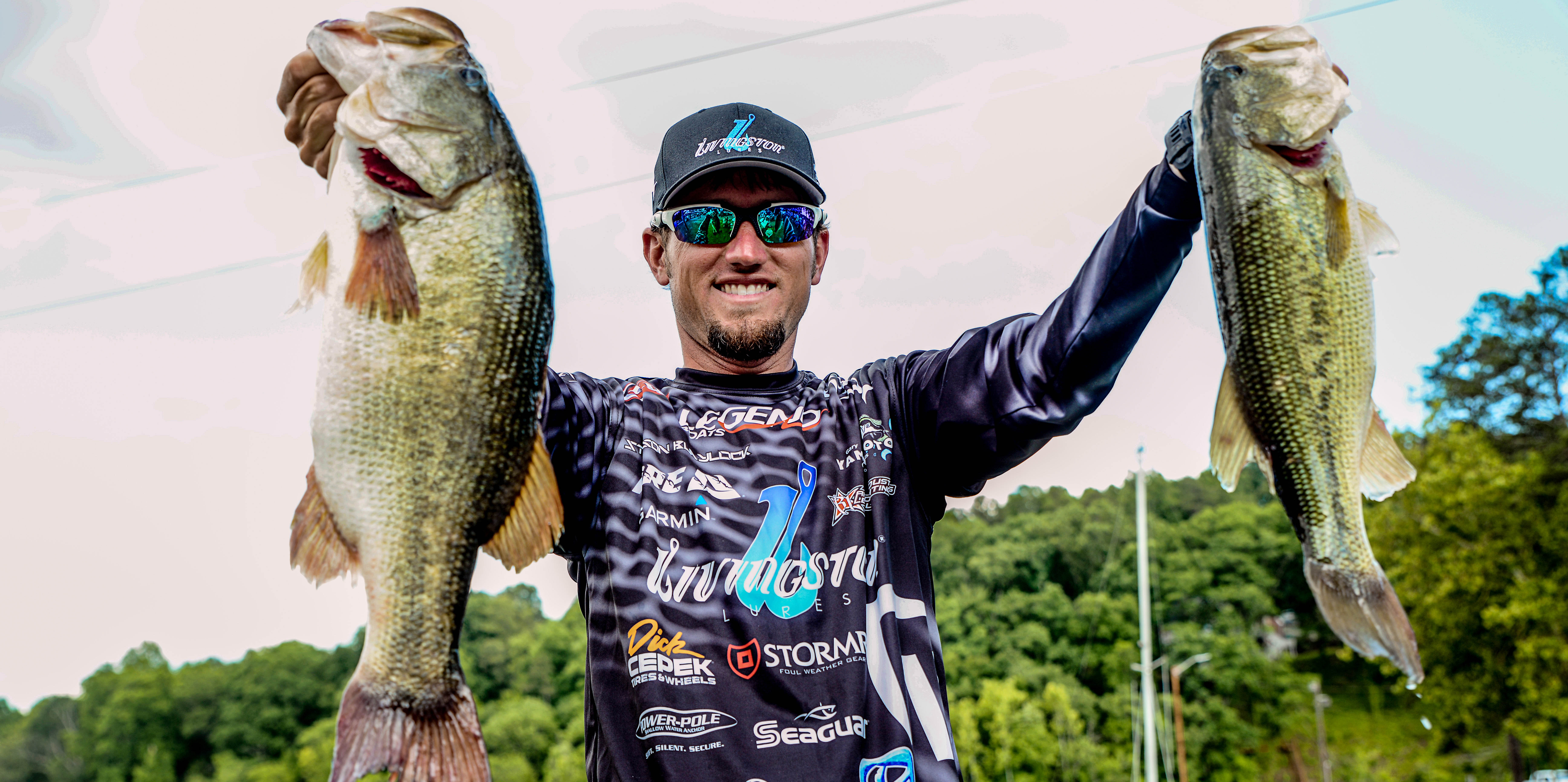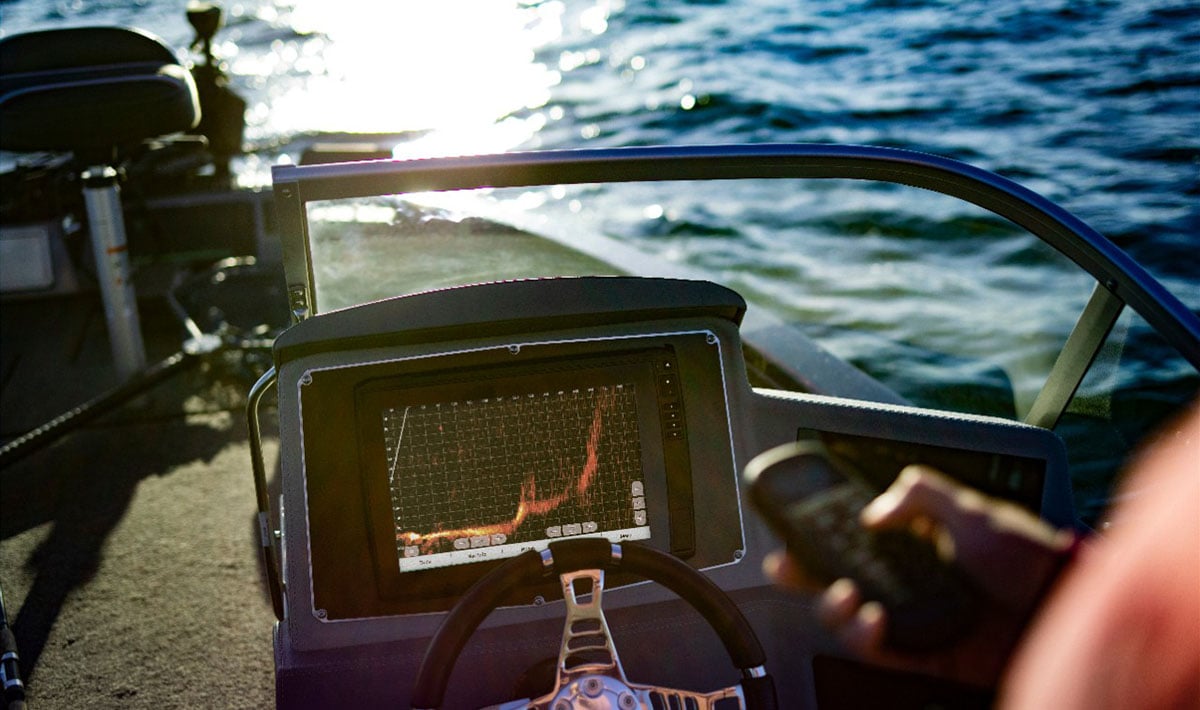
Stetson Blaylock: Fishing Deep Brush Using Panoptix
Last year, in his first season with Garmin, FLW Tour pro Stetson Blaylock amassed three top-10 finishes in only six events. At the 2015 Forrest Wood Cup, held at his home fishery, Lake Ouachita, Stetson knew that finding productive deep brush piles would lead to his success.
There was one tool on his boat that not all anglers in the Cup had in their arsenal – Garmin Panoptix. We spoke with Stetson to see how he uses the revolutionary All-Seeing Sonar technology to help him find fish in deep brush piles.
Garmin: How does Panoptix help you fish deep brush?
Stetson: For me, the biggest advantage that Panoptix gives me is the ability to constantly see the brush pile I’m fishing in real-time. I just turn my trolling motor to stay on top of it, so I never lose the spot because I can see it.
It didn’t take me long at all to learn what I was looking at. Once I figured that out and got it dialed in, I was also able to distinguish fish sitting in and swimming around brush. I can tell if they’re swimming around the outside, coming out of the brush, or staying right down in it. There are just so many different ways that Panoptix gives me an advantage.
If you’re just looking at 2D sonar, it’s hard to distinguish what you’re actually looking at. You can’t look ahead or forward with 2D sonar to see what’s actually in front of you. That’s why Panoptix is an awesome tool and gives me a huge advantage over those who don’t have it. Simply because I have the ability to turn the trolling motor a little to the left or right and see the structure I’m trying to fish, not to mention the fish swimming around it, all in real-time.
When using Panoptix, what do you look for on your unit to find the fish in the brush piles?
If you’re using Panoptix to find fish that are sitting deep in the brush pile, you want to look for little subtle movements. It’s just something that you get used to looking at. I’m still not 100% confident in my ability to use it to its full potential because it can tell you so much about so many different situations, but I am 100% confident in my ability to know what I’m looking at.
What type of baits do you usually fish around deep brush?
It varies depending on the time of year, but I like to throw crankbaits, jigs, worms, spoons, swimbaits, and if you can throw an Alabama rig, those can be very effective as well. It’s all tied into what depth the fish are in. If those fish are in 10-15’, then you might not want to throw a swimbait or topwater. But if the fish are in 25-35’, you’ll probably want to throw an umbrella rig or jig down there, or sometimes I’ll even throw a crankbait if I can get close to it. It all just depends on where the fish are.
If I’m fishing in brush sitting in 20’ and the fish are on the very bottom, I’m not going to throw a crankbait because I know the crankbait is going to get hung in the brush before I can even get to the fish. But if the fish are suspended over brush in 25’ of water, I can throw a crankbait that reaches 15-20’ and come right across the top of it, then that’ll be the first thing I throw.
With Panoptix, I can see where the fish are sitting in or on that brush pile. I’ll even circle around the brush with my boat and get different looks at it so I know exactly what I’m looking at and know my exact target.
Another major advantage Panoptix gives me is being able to not waste a cast. With Panoptix, every cast I make, I’m throwing my bait exactly where it needs to be. Whether it’s trees, grass, brush, or whatever else – I’m casting where I need to be every time.
Do you have any key tips for locating productive brush piles?
A fish-holding brush pile can be anywhere from 3’ deep out to 35-40’ deep. It just depends on the time of year. During the winter, I catch a lot of fish out of brush piles in 30-40’ of water. In the hot summer months, those fish are usually in anything between 15-25’, depending on the lake you’re on.
Fresh brush is always better. If you find a brush pile that’s been in there four or five years, it’s probably not going to be as productive as a brush pile that’s been in there for three months. Same thing goes for a brush pile that’s on a flat. It’ll be good during certain times of the year, but other times a brush pile on a drop is going to be better.
Follow Garmin Fish & Hunt on social media and share your fishing and hunting photos with us using #FishGarmin and #HuntGarmin.




